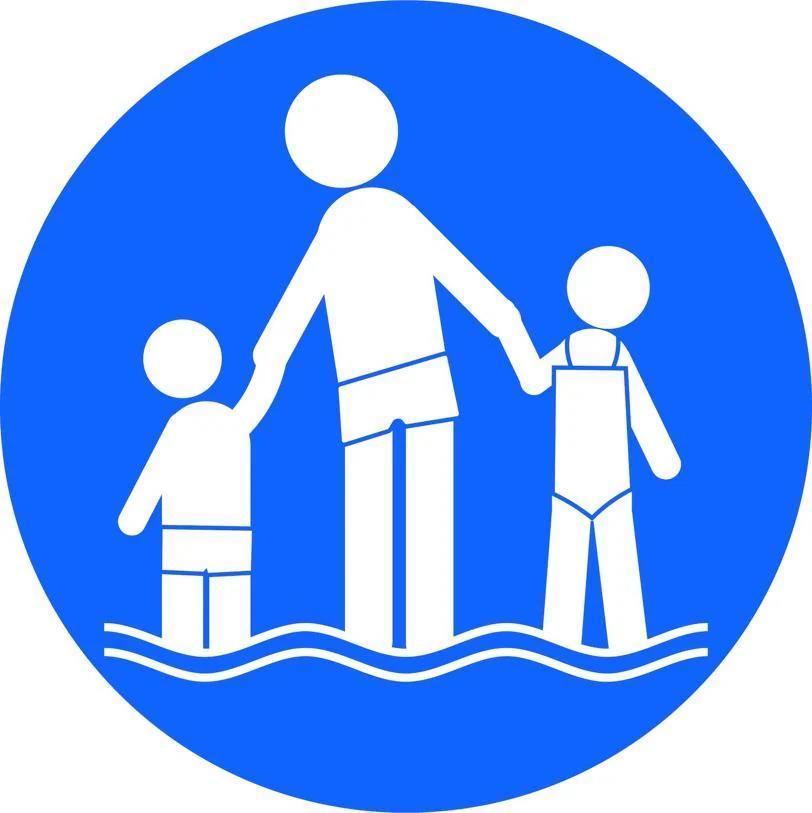This is the 10/20 rule that will help prevent more children drowning in swimming pools and at the seaside
The summer season has barely begun and already 13 children have died in the seas and in swimming pools around Spain
We have barely started the main season for taking that dip in the water and already 13 children have drowned in Spain. The latest fatality was a four-year-old girl who died from complications on Friday in the 12 de Octubre hospital following a near-drowning two days earlier in a school swimming pool in Alcorcón (Madrid). On Thursday, an 11-year-old boy also died in a municipal swimming pool in Cuevas del Almanzora (Almeria). Then last Monday a two-year-old toddler drowned in a private pool in the town of Baena (Cordoba). These drownings are a terrible reality that is repeated every summer. A few seconds of absent-mindedness and tragedy strikes.
The infant mortality figures recorded by the Royal Spanish Lifesaving Federation (RFESS) are devastating. Every year more than thirty children die in Spain as a result of drowning. "And the worst thing is that the vast majority of deaths could have been avoided if adequate precautions had been taken both before and during bathing," warn the experts.
The Spanish Society of Emergency Medicine (SEMES) insists on the importance of "maximum supervision of children when they are in or near water." In fact, statistically most drowning deaths in under-4s occur in privately-run pools after lunch between 3pm and 6pm. "Did you know that your child is more likely to die by drowning than in a road traffic accident?", said the National Association for Child Safety, which is responsible for the '#OjoPequeAlAgua' campaign to raise awareness among parents of the need to "keep a constant eye on their children" when near water. Here are some tips to avoid giving yourself and your child a nasty scare at the beach or pool this summer.
Always have someone on lookout
When it comes to children and water there is no better safety policy than "permanent adult supervision". In this sense, lifeguard experts advise appointing a person to be responsible for watching the children and for those adults to take turns doing so. That way they can avoid omissions or misunderstandings such as 'I thought they were with their grandmother' or 'I thought their aunt was looking after them'.
"The person in charge of supervising children has to focus on keeping watch. No more answering a WhatsApp, flicking through the pages of a book or chatting with the person next to them. Thirty per cent of children who have died from drowning were not being supervised by an adult", was the stark warning from those in charge at the National Association for Child Safety.
Always within reach
Experts advise following the 10/20 rule to prevent children drowning. This is a surveillance strategy that requires the adult in charge of monitoring the children to look to the water at least every 10 seconds and have the children within arm's reach only at a distance that can be covered within a maximum of 20 seconds.
"It only takes 10 centimetres of water for a baby to drown. Never leave your children alone. Children as young as 3 or 4 years old can drown even if they know how to swim. What usually happens to them is that they panic when they fall into the water and are unable to pull themselves out. Swimming lessons are highly recommended, but in no case are lessons a substitute for supervision by parents or family members, especially for children under 5, the most vulnerable age group," insisted paediatrician Lucía Galán, better known on social media as 'Lucía, my paediatrician'.
Arm-bands out, life-vest in
Floats and arm-bands are most certainly not life-saving flotation devices and can give parents a false sense of security. "The life-vest is the most advisable safety gear," agree all the experts, who also warn of the dangers of inflatables in the sea. "Your child will not be the first or the last to fall asleep on a lilo and drift away." Bear in mind that the sea, even the Mediterranean, has its dangers. "When there is a yellow flag flying, for example, it is safest if the water goes no higher than your child's hips. If you get into a riptide current, don't try to fight it, you will only exhaust yourself. Swim parallel to the shore until you are out of the rip."
Hair tied up
For pools in particular, the experts also recommend "avoiding hair staying loose, loose-fitting swimwear, dangling necklaces, chains, ropes or anything else that could be sucked into the pool. In fact, it is advisable for all adults to know the location of the pool's main power shut-off so that they can act quickly in the event of someone being trapped."

